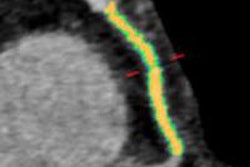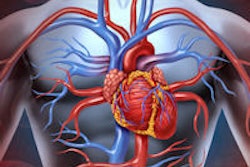
Informing cardiac catheterization labs of incoming heart attack patients 10 or more minutes before they arrived at the lab reduced their risk of mortality and the time it took for them to undergo surgery, according to research published in the September 24 issue of JACC: Cardiovascular Interventions.
Most patients with ST-elevation myocardial infarction (STEMI) -- a form of heart attack that is associated with a high risk of disability and death -- require an immediate percutaneous coronary intervention (PCI) at a hospital cath lab. On average, emergency medical service teams in the U.S. have been giving the labs at least 10 minutes of notice only 41% of the time before sending them a STEMI patient (JACC Cardiovasc Interv, Vol. 11:18, pp. 1837-1847).
The amount of time cath labs have to prepare for surgery for these patients is very important, lead author Dr. Jay Shavadia from Duke University Medical Center said in a statement from the American College of Cardiology (ACC).
Shavadia and colleagues analyzed 27,840 cases of STEMI patients from the ACC's Chest Pain - MI Registry who underwent PCI at one of 744 catheter labs between January 2015 and March 2017. Their analysis revealed that providing timely notification, or "preactivation," to the cath labs led to several improvements in patient care, compared with no preactivation:
- A median of 12 minutes faster door-to-treatment time
- A higher proportion of patients who underwent PCI within 90 minutes of first contact with emergency medical services
- A significantly lower chance of reperfusion delay in patients
- A reduction in risk-adjusted, in-hospital mortality rates
"The study has provided data we can now use to move forward to help save more lives," Shavadia said. "The next step is to begin establishing treatment protocols between PCI-capable hospitals and prehospital [emergency medical service] providers to facilitate and successfully implement cath lab preactivation strategies."



















